Recreating a Classic London Pub Crawl
In his 1949 book about the pubs of London, Back to the Local, journalist Maurice Gorham wrote of “that epic pub crawl from Ludgate Circus to Trafalgar Square that we have all talked about and never done.” How can that be read as anything but a challenge?
In 2015, the crawl from the boundary of London’s financial district to the heart of the West End is rather less epic, as there are now just 11 pubs with entrances on Fleet Street or the Strand, rather than the 20 or so of Gorham’s day. For the modern drinker, perhaps less reckless and capacious than the newspapermen of the 1940s, it is, however, quite sufficient. But do those few that survive retain any of the old atmospheres? We aimed to find out.
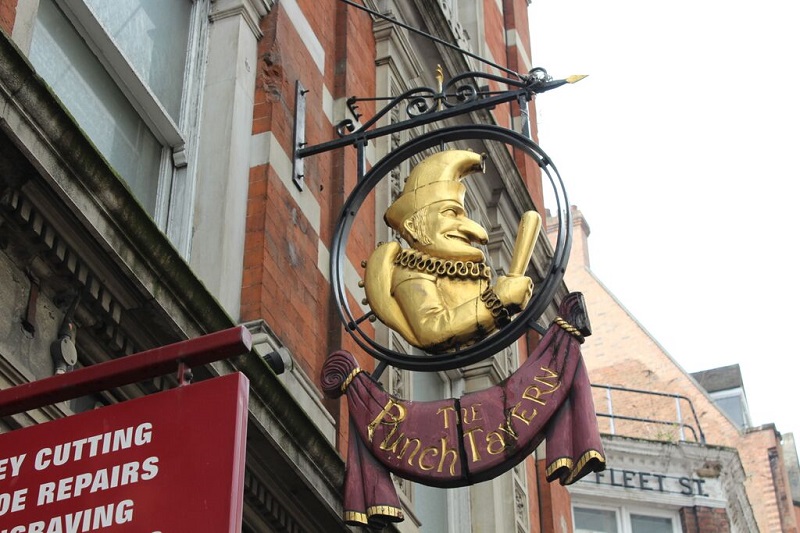
The Punch Tavern. (Photo courtesy Boak and Bailey)
After a stomach-lining breakfast at Gerry’s Café (39 Ludgate Hill) the first stop is the Punch Tavern (99 Fleet St.)—a pub with no frontage to speak of other than a gorgeously tiled tunnel under a sign bearing the sinister, grinning face of the eponymous puppet. It is actually named after the famous satirical magazine whose staff used to drink here when it was called the Crown & Sugar Loaf. Inside, the pub makes up for a lack of windows with frosted skylights, mirrors and fairy lights. Though most of the details don’t hold up to scrutiny, there are relics of an 1897 refurbishment, and the mood, as a whole, remains wonderfully Victorian. The beer isn’t exciting, exactly, but Marston’s EPA from Burton-on-Trent, served in dainty stemmed glasses, is a good start to our session.
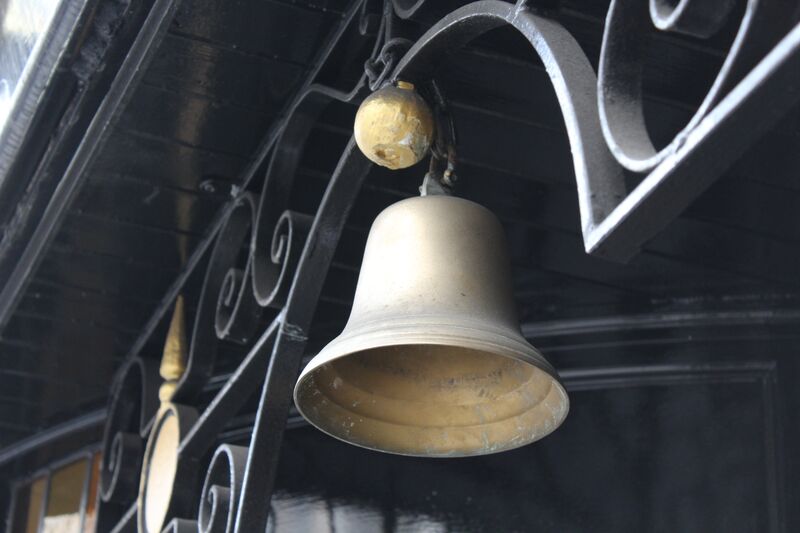
The Old Bell Tavern. (Photo courtesy Boak and Bailey)
A few doors along, on the other side of an alleyway that offers a tantalizing vertically letterboxed glimpse of Christopher Wren’s St. Bride’s church, is the Old Bell (95 Fleet St.). Run by the Nicholson’s chain, it nonetheless remains a down-to-earth drinkers’ pub. The lighting is low—dark to the point of blackness in the corners—which provides a vaguely conspiratorial John le Carré vibe. We drink Runner, a suitably old-fashioned brown bitter from the revived East London brewery Truman’s.
Farther along is what another pub writer, Alan Reeve-Jones, called “probably the most famous pub in Britain”—Ye Olde Cheshire Cheese (145 Fleet St.). It is painted forbiddingly black, and its entrance is up a side passage clogged with selfie-taking tourists. It ought to be tacky, but there is something magical in the smell of wood smoke and the creaking of the floorboards. Doorways lead to small public rooms, and staircases lead to vaults, which lead to further vaults, and everywhere there are visitors from overseas gaping in delight, forcing down “warm, flat” half pints of Samuel Smith’s Old Brewery Bitter. “It’s England’s version of the Hofbräuhaus in Munich,” says one of our party perceptively—a tourist attraction, yes, but not a trap. Here, we drink 2.8% dark mild—a style rarely seen in London pubs and tactically useful on an extended crawl.

The Tipperary. (Photo courtesy Boak and Bailey)
Across the road is the post-box-red Tipperary (66 Fleet St.), which looks superficially like any other plastic Irish pub. The worn mosaic on the threshold betrays its history, however: This was once the legendary Mooney’s, purchased by a Dublin brewery in around 1700, which spawned a chain of Irish pubs across London. The front bar is a narrow corridor with space to lean and a couple of stools. Gorgeous mirrors bearing the Mooney’s name cover the wall, reflecting the range of whiskies and whiskeys on the back bar. On our visit, an Irish barmaid is serving Guinness to a crowd of her compatriots watching rugby under St. Patrick’s Day bunting. Somehow, the atmosphere seems to belong more to the East End than the increasingly sterile heart of London.

Ye Olde Cock. (Photo courtesy Boak and Bailey)
Further along, out of the orbit of St. Paul’s and into Rumpole country, is Ye Olde Cock (22 Fleet St.). Its narrow frontage conceals an interior that stretches deep into the block. Part of the Taylor Walker chain, the whole pub is buffed to glossy corporate perfection. Its claims to antiquity are very dubious indeed: Though there has been a Cock near this site for some centuries, it was not in this building, which dates from 1912. Westerham Brewery of Kent produces a very decent house beer for Taylor Walker called 1730—golden in color with the earthy tang of English hops. Upstairs there is a 17th-century fireplace brought from the old premises and a good view of the gilded rooster that gives the pub its name.
Directly opposite, on the site of the original Cock, is the Old Bank of England (194 Fleet St.), which is one of the West London brewery Fuller’s grandest houses. Built in 1888, but in Italian rather than gothic style, it once housed an outpost of the City of London institution after which it is named. Beyond the imposing entrance lies a vast single room of red and gold with an ornately plastered ceiling, faux marble and chandeliers. A central island bar, though it dates only to the 1990s, recalls true Victorian pubs such as the Princess Louise at Holborn. The best spot for observing the throng, and admiring the décor, is on the upper gallery. Very nearly the full range of Fuller’s beers is on offer, in tip-top condition, but expensive, with standard bitters at c.£4.35 a pint. (And note that it does not open at weekends.)
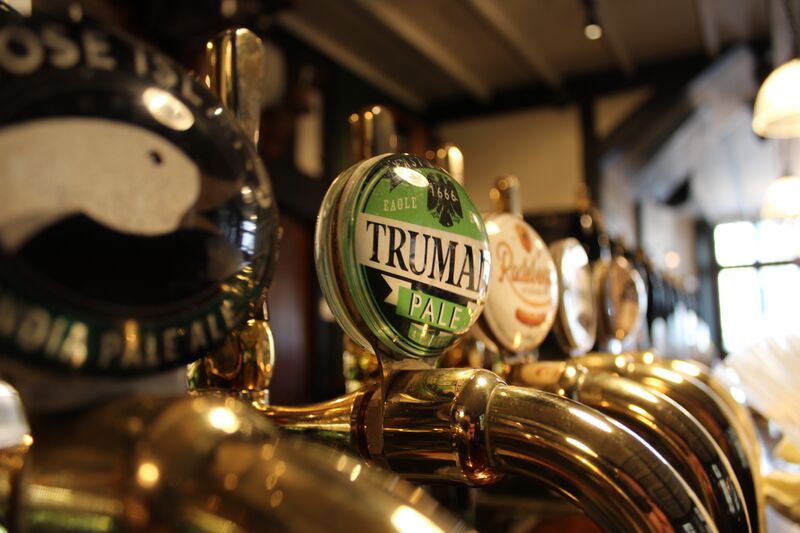
The George. (Photo courtesy Boak and Bailey)
Just past No. 1 Fleet St., with its plaque commemorating the long-gone Devil Tavern, is The George (213 Strand). The building is Victorian faux-Tudor with black-and-white half-timbering and a tranquil wood-paneled interior that hints at “Wolf Hall.” Of all the pubs on this run, it has the widest range of interesting beer, with multiple draft lines offering a true variety of styles, strengths and breweries. We drink straw-pale, citrusy Dark Star Hophead at 3.8% while the last traditional red Routemaster double-decker buses serving the number 15 route sail by beyond the leaded windows.
A long thirsty walk around churches, consular buildings and theaters of Aldwych concludes with two pubs almost side by side. The Wellington (351 Strand) was described by the cultural critic Ian Nairn in his classic 1966 book Nairn’s London as “what every pub … should be and isn’t.” Nowadays, as part of the Nicholson’s chain, it has lost much of its charm. Tables on the pavement outside make it look like a bad Parisian café, while inside groups in matching anoraks huddle round the bar looking confused while harried bar staff scowls at them—just what we had expected, pessimistically, to find at every stop on the crawl. For completeness, we drink warmish halves of Nicholson’s Pale Ale, brewed by St. Austell of Cornwall, but don’t feel compelled to hang around.
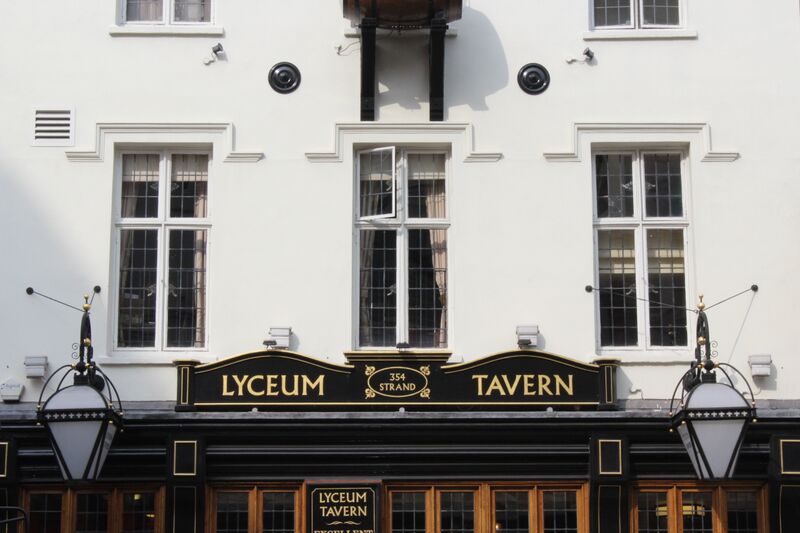
Lyceum Tavern. (Photo courtesy Boak and Bailey)
The nearby Lyceum (354 Strand) is one of the pubs acquired by Samuel Smith of Tadcaster in the in 1980s and brought back in time by its talented interior designers so that it now looks almost like a Hollywood idea of a British pub. There is much competition for a set of intimate booths along the outer wall of the downstairs bar, the one by the front window being particularly prized with its view of the bustle of the Strand. Though it might seem reckless as part of the long game, we can’t resist a bottle of the brewery’s potent imperial stout.
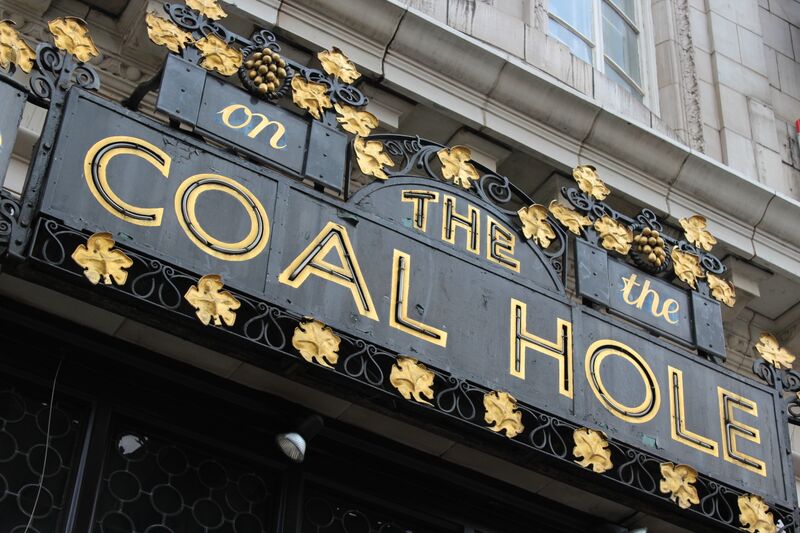
The Coal Hole. (Photo courtesy Boak and Bailey)
The penultimate pub on the crawl, The Coal Hole, is yet another Nicholson’s. Though the present building dates from 1900, a pub has stood on this site since the 18th century and, in the mid-19th century it was famous for its nude tableaux, or poses plastiques, which took advantage of a loophole in indecency laws. Nowadays, it is almost always busy not only with tourists but also serious drinkers in business suits, sinking their troubles one pint at a time. With frosted windows all round, there is plenty of diffuse light reflecting from polished wood, and it has that special acoustic character found in the best pubs that makes it impossible for your conversation to be overheard by people two seats away. Here, we drink draft Pilsner Urquell in homage to two trend-setting lager beer saloons, Darmstatter’s and the Tivoli Beer Garden, which operated nearby in the late 19th century. (Both buildings are now gone.)
Finally, there is the Nell Gwynne, which is up an alleyway (Bull Inn Court) but with its sign hanging over Strand (next to Santander, No. 406). We find it heaving with a friendly, mixed crowd of young and old, gay and straight, students and tourists, getting along famously to the sounds of a well-curated jukebox offering five plays for £1. (And you don’t get much in Central London for £1.) Low light and flickering candles make it feel like a party even at 5 p.m. We drink more Dark Star Hophead and revel in a happy end to what was, indeed, an epic crawl.
On reflection, though many of the pubs we visited bore the marks of corporate makeovers, we were pleasantly surprised at how authentic most remain: to a great extent, as Maurice Gorham put it, “Each one is somebody’s local.”
Boak & Bailey have been blogging at boakandbailey.com since 2007. They were named 2014 beer writers of the year by the British Guild of Beer Writers for Brew Britannia: The Strange Rebirth of British Beer. They live in Cornwall in the far west of the UK.

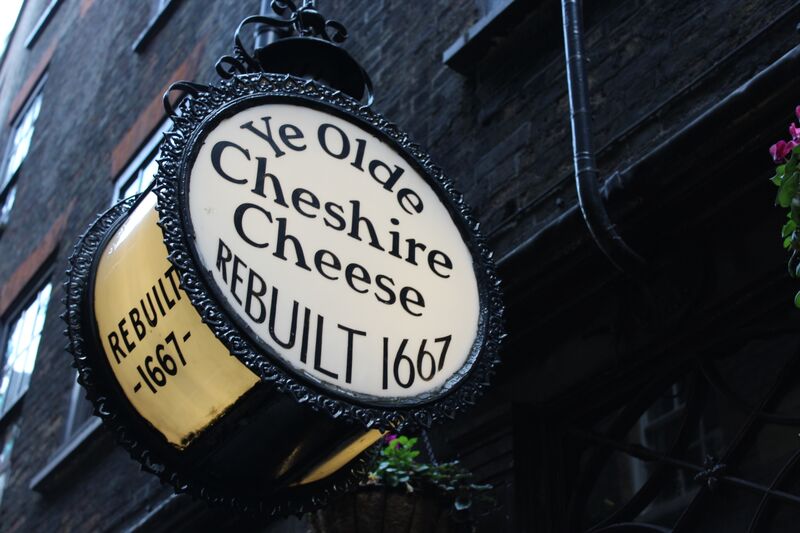

Gosh, this doesn’t half remind me of a really good book of historic London pub crawls some bloke wrote back in 2001 and updated in 2010. London By Pub, it was called. Now who was it who wrote it…? Oh yes, that’s right – it was me!
I had a terrible pint of Pride in the Tipperary several years ago. Should have had the Guinness.
Do you know what the “SLW” initials in the windows of the Coal Hole stand for? I didn’t take a photo, but there’s one here: https://www.flickr.com/photos/jostring/2938935665/
Kake — it’s ‘SWL’ — Strand Wine Lodge. You can just see the name in the metal panels over the door here.
The Salisbury offers not only a slice of sumptuous Victorian history, but an international menu with some classic British favourites and up to 6 well kept real ales. The pub is one of just two pubs in the country to receive the Beautiful Beer Platinum Award, so you can expect an exceptional pint.
So can anyone tell me where was Mooneys in The Strand and exactly how long was the bar. It was a regular stag night stop which had to be scouted in advance as the Guinness was hand pumped. Also what happened to Shorts Northumberland Avenue another stag night stop, a 30s icon. I was never sober at either venue but I do remember them. Every pub from Ludgate to Piccadilly Circus whatever happened to proper pubs?
Mooneys was at 395 The Strand.
Long closed, now a souvenir shop